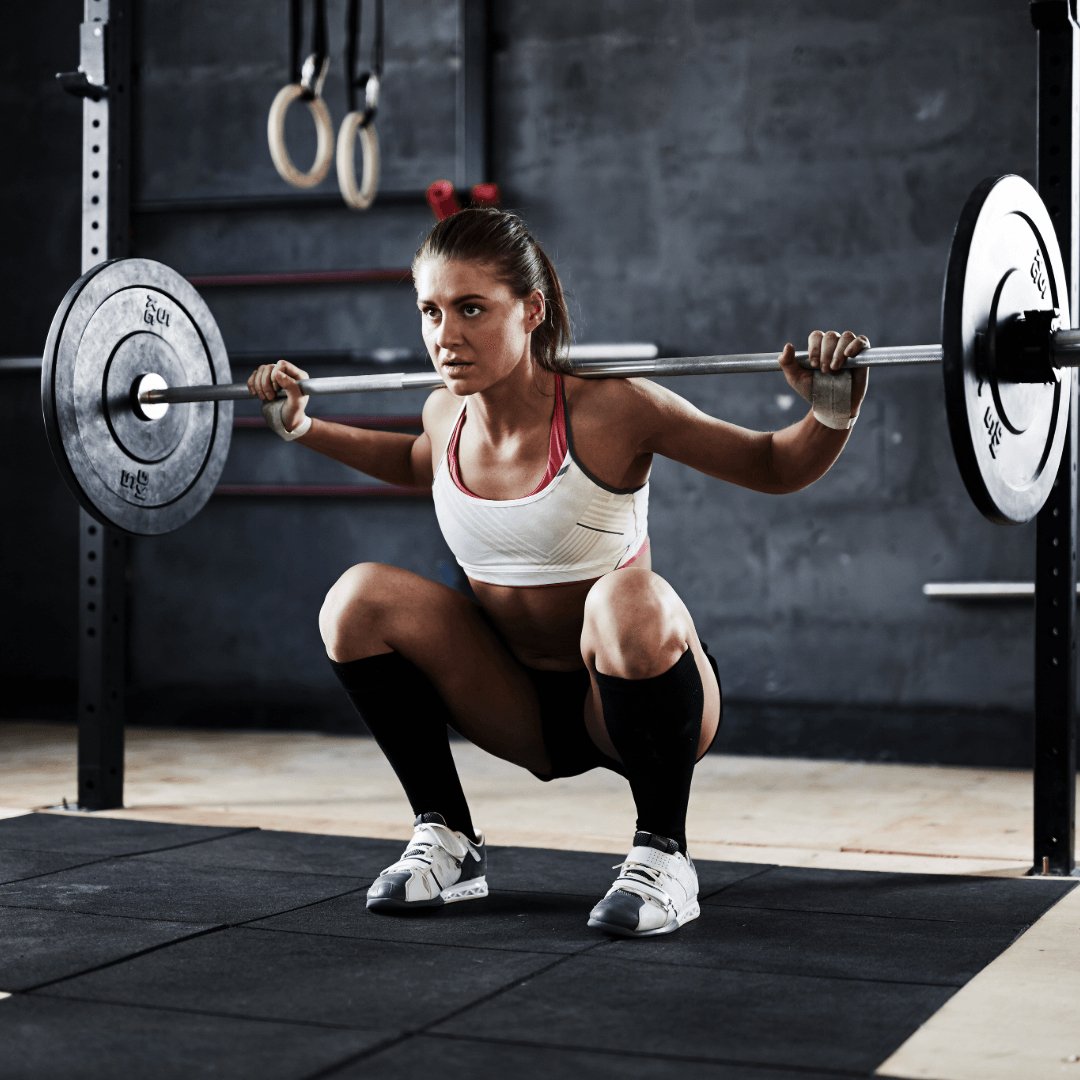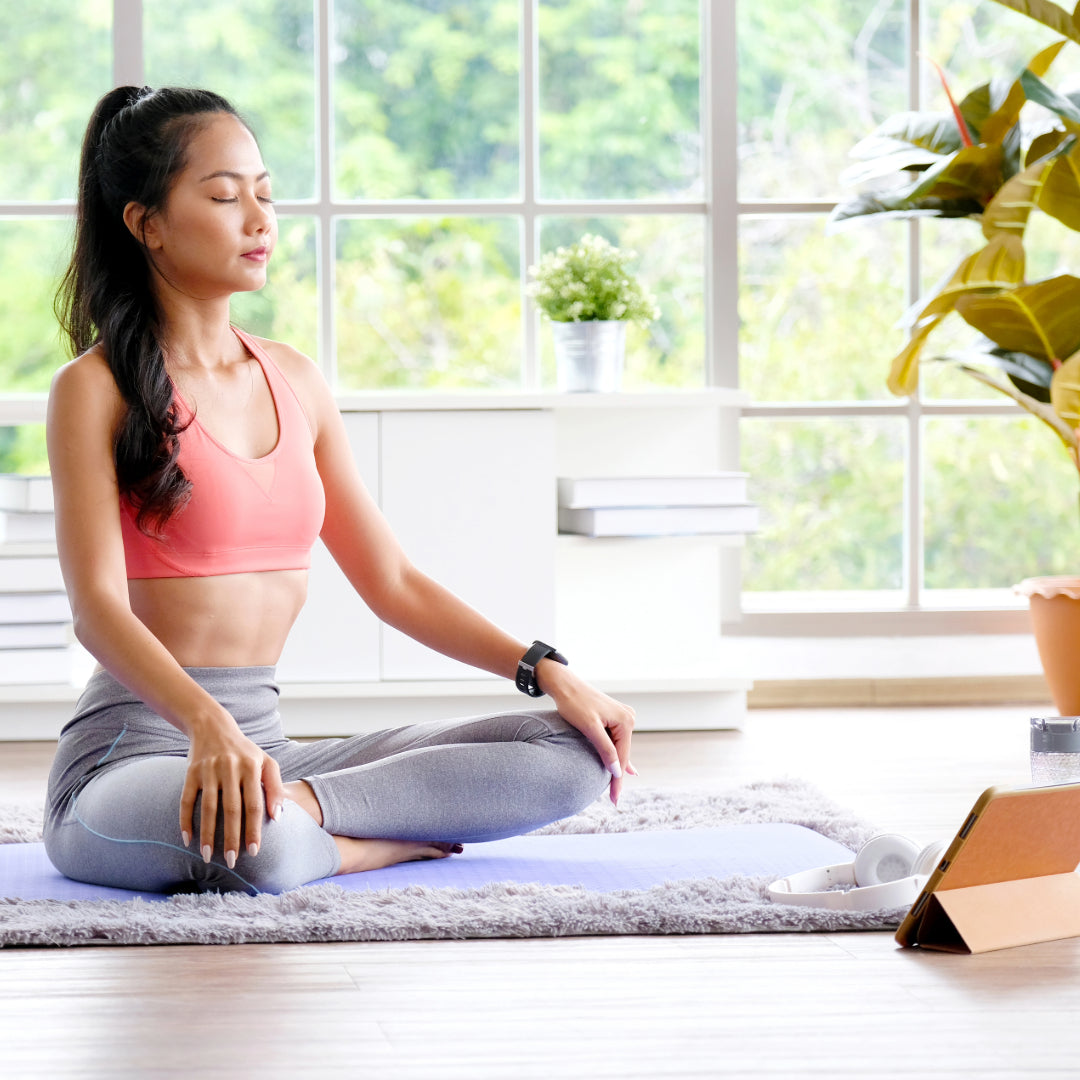
Mastering the Barbell Back Squat: Techniques, Stances, and Variations for Peak Performance
INTRODUCTION
The barbell back squat reigns supreme as the quintessential squat variant, deeply embedded in the training regimens of elite athletes and weekend warriors alike. This time-honored exercise predates modern fitness centers, standing as one of the most ancient practices in physical conditioning.
At PeakRoar, we recognize that the barbell squat's appeal transcends age and skill level, offering unparalleled advantages. This stems from its nature as a compound movement, engaging multiple muscle groups across the body, and its role as a functional exercise.
But what exactly is a functional exercise? It's a type of workout that replicates everyday actions—like sitting down in a chair, exiting a vehicle, or ascending stairs. By incorporating squats into your routine, you not only amplify your strength within the confines of the gym but also enhance your physical capabilities in daily life.
Convinced yet? Join us at PeakRoar as we delve deeper into the realm of leg training supremacy. We'll unveil essential technique tips that could see you lifting weights beyond your imagination.
Encountering difficulties in achieving full squat depth? Begin your workout with our recommended squat mobility drills to improve your performance.
Table of Contents:
- Understanding the Back Squat
- Muscles Engaged in the Back Squat
- Advantages of Back Squatting
- Comparing Front and Back Squats
- Executing the Back Squat Correctly
- Optimal Foot Placement and Stance
- Different Types of Barbell Squats
Understanding the Back Squat
The back squat, a cornerstone of strength training, is pivotal for anyone looking to enhance their physical fitness. This guide aims to illuminate the path to mastering this fundamental exercise, ensuring you can leverage its benefits to the fullest.
Historical Roots and Importance
The back squat's legacy predates modern fitness, serving as a testament to its effectiveness and simplicity. By engaging a wide array of muscle groups, it stands as a versatile component of strength and conditioning programs worldwide.
The Biomechanics Behind the Movement
Engaging Multiple Muscle Groups
Focusing on the lower body, the back squat targets the quadriceps, hamstrings, glutes, and calves. Its compound nature doesn't stop there; it also recruits the core, back, and shoulders, offering a comprehensive workout.
The Movement Explained
The exercise involves a synchronized motion of the hips, knees, and ankles, promoting muscle growth, joint flexibility, and stability. This not only aids in building strength but also in enhancing functional mobility for daily activities.
The Athletic Edge
For athletes, the back squat is indispensable. It's foundational for developing explosive power and speed, crucial for competitive sports. Moreover, it stimulates growth hormone release, aiding in muscle development and fat loss.
Muscles Engaged in the Back Squat
The back squat is renowned not only for its ability to build strength and power but also for its comprehensive engagement of multiple muscle groups. This section delves into the anatomy of the back squat, highlighting the key muscles activated during this quintessential exercise.
Primary Muscle Groups
Quadriceps
The quadriceps, or quads, are the main drivers in the ascent phase of the back squat. Located at the front of the thigh, these muscles are crucial for knee extension and play a pivotal role in the squatting movement.
Hamstrings
While the quads extend the knee, the hamstrings, situated at the back of the thigh, are responsible for hip extension. They work in concert with the quads to power the upward phase of the squat.
Gluteus Maximus
The glutes are significantly activated during the back squat, especially at the bottom of the squat and during the upward movement. They are essential for hip extension, contributing to the lift and stability throughout the exercise.
Secondary Muscle Groups
Core Stability
The core muscles, including the abdominals and the muscles of the lower back, are engaged throughout the squat to stabilize the body. This engagement is crucial for maintaining proper posture and protecting the spine.
Adductors and Abductors
The inner and outer thigh muscles (adductors and abductors) play a supportive role in stabilizing the legs during the squat, ensuring proper knee alignment and balance.
Calves
The calf muscles, comprising the gastrocnemius and soleus, are involved in the back squat by stabilizing the ankle and contributing to the overall balance and posture during the exercise.

Advantages of Back Squatting
The back squat, a linchpin in the world of strength training, offers a plethora of benefits that extend beyond the gym. This segment explores the multifaceted advantages of back squatting, highlighting why it's considered a powerhouse exercise in achieving optimal fitness and well-being.
Comprehensive Strength Development
Full-Body Workout
The back squat is a compound exercise that targets multiple muscle groups simultaneously, including the quads, hamstrings, glutes, core, and more. This holistic approach ensures a balanced development of strength across the body.
Enhanced Core Stability
Engaging the core throughout the squat not only protects the spine but also improves overall stability and posture. This increased core strength is beneficial for both athletic performance and daily activities.
Improved Functional Mobility
Mimics Daily Movements
The back squat mirrors movements we perform in everyday life, such as sitting and standing. Regularly practicing squats enhances functional mobility, making daily tasks easier and reducing the risk of injury.
Increases Flexibility
Performing squats with proper form can improve joint flexibility, particularly in the hips, knees, and ankles. This increased range of motion contributes to more efficient movement patterns and flexibility.
Athletic Performance and Health Benefits
Boosts Athletic Efficiency
For athletes, the back squat is crucial for developing explosive power and speed, essential components in many sports. This translates to improved performance on the field, court, or track.
Promotes Fat Loss and Muscle Growth
The intense nature of back squatting stimulates the release of hormones that promote muscle growth and fat loss. This metabolic boost can lead to a leaner, more muscular physique.

Comparing Front and Back Squats
The squat is a fundamental exercise in strength training, with the front and back variations being among the most popular. Each has its unique benefits and challenges, making them valuable for different reasons. This section delves into the distinctions between front and back squats, helping you understand which might best suit your training goals.
Positioning and Muscle Engagement
Front Squat
In the front squat, the weight is positioned in front of the body, resting on the shoulders. This placement demands greater upright posture, significantly engaging the core and the upper back. It primarily targets the quadriceps and requires flexibility in the wrists and shoulders.
Back Squat
Conversely, the back squat involves placing the weight on the upper back, which allows for heavier loads to be lifted. This variation emphasizes the posterior chain muscles, including the glutes, hamstrings, and lower back, in addition to the quadriceps.
Benefits and Considerations
Enhanced Core Activation in Front Squats
The front squat challenges core stability and strength due to the anterior placement of the weight, promoting improved posture and balance.
Increased Load Capacity in Back Squats
The back squat enables the lifting of heavier weights, contributing to greater overall strength gains and muscle mass increase, particularly in the lower body and posterior chain.
Suitability and Application
Front Squat
Ideal for athletes and individuals looking to enhance core strength, improve posture, and focus on quadriceps development. It's also beneficial for those seeking to improve functional movements and athletic performance.
Back Squat
More suited for those aiming to build significant lower body strength and mass, especially in the glutes and hamstrings. It's a staple for powerlifters and those focused on increasing their overall lifting capacity.
Executing the Back Squat Correctly
Mastering the back squat is crucial for harnessing its full benefits while minimizing the risk of injury. This section provides a step-by-step guide to performing the back squat with proper form, ensuring you can execute this foundational exercise safely and effectively.
Preparing for the Squat
Setting Up
Begin by positioning yourself under the barbell in the squat rack. The bar should rest on the upper portion of your back, slightly below the neck. Keep your feet shoulder-width apart, with toes slightly pointed outward to ensure stability and balance.
Grip and Stance
Grip the bar firmly with both hands, wider than shoulder-width apart, to create a stable base. Brace your core, tighten your shoulder blades, and lift the bar off the rack by straightening your legs.
The Descent
Initiating the Movement
Start the squat by pushing your hips back and bending your knees. Ensure your chest remains upright, and your back straight to maintain proper posture throughout the movement.
Depth and Form
Aim to lower yourself until your thighs are at least parallel to the floor. Keep your knees aligned with your toes and avoid letting them cave inward. Your weight should be distributed evenly across your feet, maintaining full contact with the ground.
The Ascent
Driving Up
To rise from the bottom of the squat, push through your heels and drive your hips upward. Keep your core engaged and your back straight as you return to the starting position.
Finalizing the Repetition
Once you've reached the top, prepare for the next repetition by ensuring your stance and posture are correct. Repeat the movement for the desired number of repetitions, focusing on maintaining form and control throughout each phase.
Optimal Foot Placement and Stance in the Back Squat
Achieving the correct foot placement and stance is pivotal for maximizing the efficacy of the back squat while safeguarding against injuries. This segment offers insights into establishing the ideal foundation for your squats, tailored to enhance performance and stability.
The Foundation of Your Squat
Understanding Stance Width
The optimal stance width varies among individuals, influenced by factors such as body type, flexibility, and personal comfort. Generally, a shoulder-width stance or slightly wider is recommended, allowing for adequate balance and power generation.
The Role of Foot Angle
Position your feet with a slight outward angle, about 15 to 30 degrees, to align with the natural rotation of your hips. This positioning facilitates deeper squatting and protects the knees by accommodating their natural tracking over the toes.
Tailoring Your Stance
Personalization is Key
Experiment with slight adjustments in stance width and foot angle to discover what best suits your anatomy and squatting style. Pay attention to how these changes affect your comfort, squat depth, and stability.
Consistency in Placement
Once you've identified your optimal stance, consistently replicate it in each session. This consistency helps in developing muscle memory and improving squat performance over time.
The Impact of Proper Foot Placement
Enhanced Stability and Power
Correct foot placement lays the groundwork for a stable base, enabling you to generate maximum power during the ascent phase of the squat. It also ensures even distribution of weight across the foot, reducing the risk of imbalance or injury.
Improved Squat Depth and Efficiency
An optimal stance facilitates a greater range of motion, allowing for deeper squats without compromising form. This increased depth enhances the activation of the targeted muscle groups, leading to more effective strength gains.
Different Types of Barbell Squats
Barbell squats come in various forms, each with its unique benefits and challenges. Exploring these variations can add diversity to your workout routine, targeting different muscle groups and improving overall strength and mobility. This final section introduces several key types of barbell squats, broadening your training repertoire and offering fresh ways to enhance your fitness journey.
High Bar Squat
Characteristics
The high bar squat, or Olympic squat, positions the barbell higher on the traps, near the neck. This variation encourages a more upright torso, significantly engaging the quadriceps while still activating the posterior chain.
Benefits
Ideal for developing quad strength and improving posture. It also promotes greater depth, enhancing mobility and flexibility.
Low Bar Squat
Characteristics
In the low bar squat, the bar is placed lower on the upper back, across the top of the rear deltoids. This positioning allows for a greater forward lean, shifting the emphasis to the glutes and hamstrings.
Benefits
Enables lifting heavier weights by engaging the powerful muscles of the posterior chain. It's favored by powerlifters for its efficiency in strength gains.
Front Squat
Characteristics
The front squat involves placing the barbell on the front shoulders, with elbows pointing forward. This variation demands significant core strength to maintain an upright position.
Benefits
Targets the quadriceps and upper back, enhancing core stability and posture. It's particularly beneficial for athletes seeking to improve performance and functional strength.
Overhead Squat
Characteristics
The overhead squat requires holding the barbell overhead with arms extended throughout the squat. This advanced variation challenges balance, mobility, and coordination.
Benefits
Develops core and shoulder stability, along with improving overall body control and flexibility. It's a comprehensive exercise that tests and enhances functional fitness.
Safety Bar Squat
Characteristics
Performed using a specialized safety bar that curves around the neck and shoulders, this squat variation reduces strain on the shoulders and wrists, making it accessible for those with limited mobility.
Benefits
Focuses on the posterior chain while providing a comfortable alternative for those with upper body restrictions. It's also useful for rehabilitating injuries and for beginners learning squat mechanics.
The PeakRoar Perspective
At PeakRoar, we advocate for a holistic approach to strength training, recognizing the value of incorporating various squat variations into your routine. Each type of barbell squat offers unique advantages, catering to different fitness goals and preferences.
By diversifying your squat practice, you can achieve a well-rounded development of strength, flexibility, and balance. PeakRoar is dedicated to guiding you through this exploration, ensuring that you not only achieve your fitness goals but also enjoy the journey. Embrace the diversity of barbell squats with us, and let's elevate your training to new heights of achievement and satisfaction.







